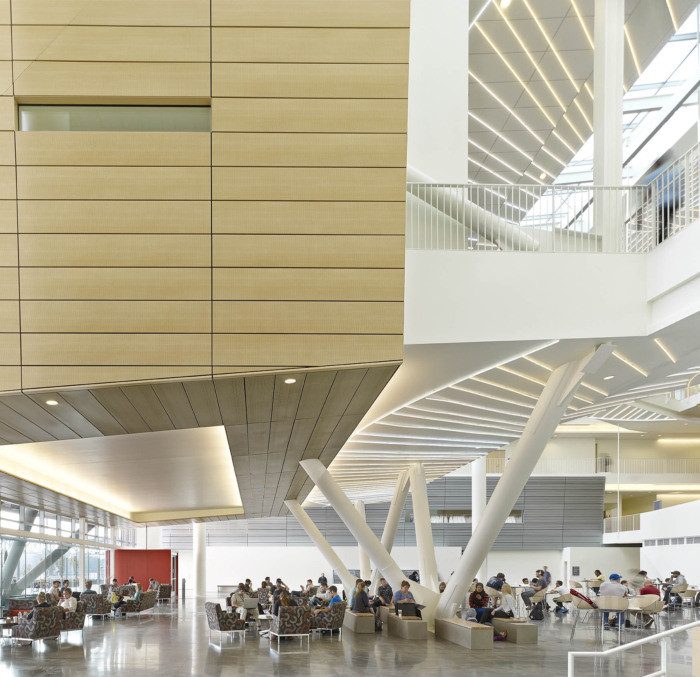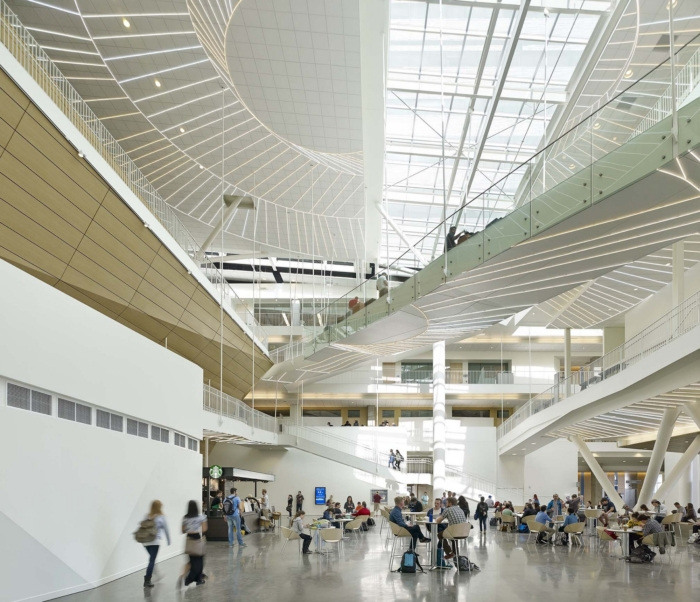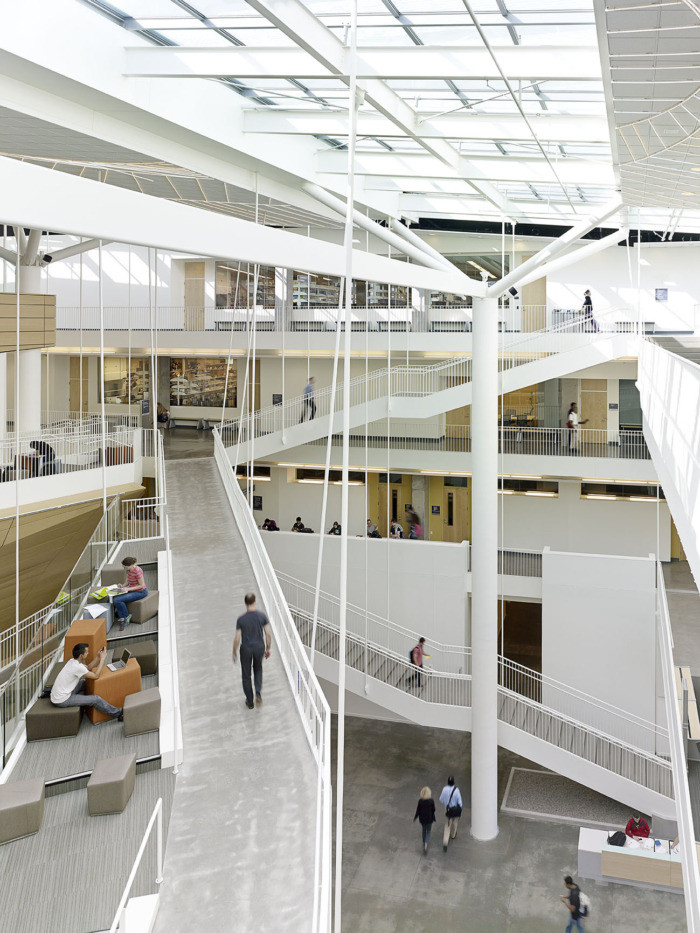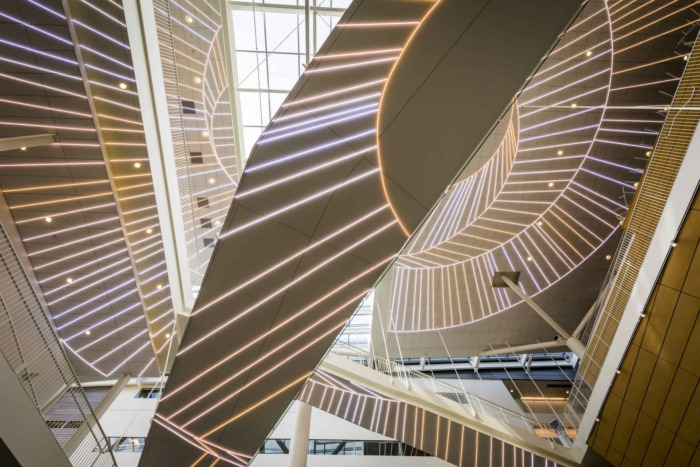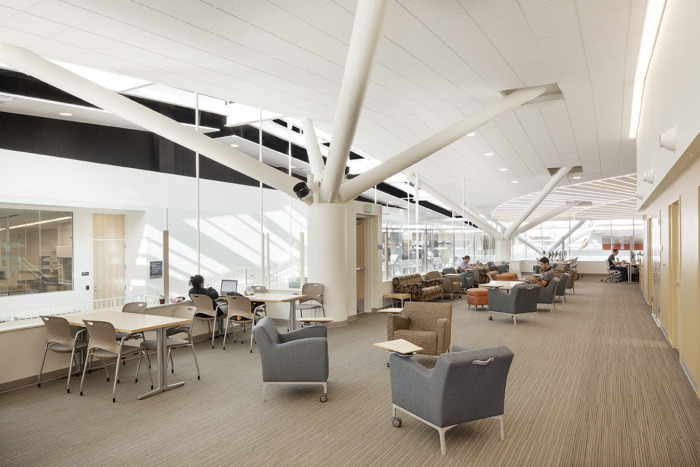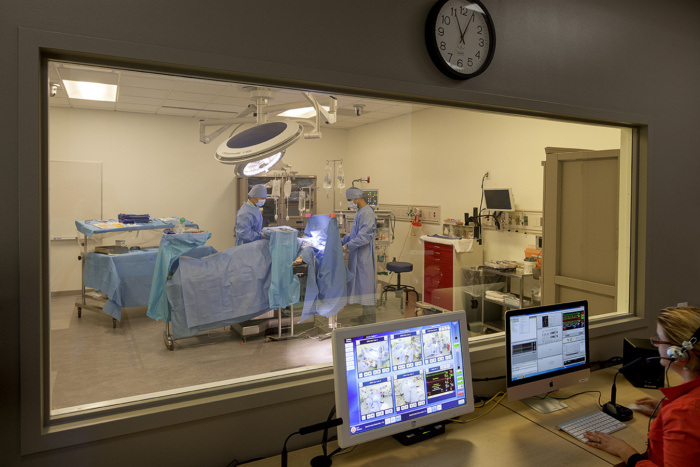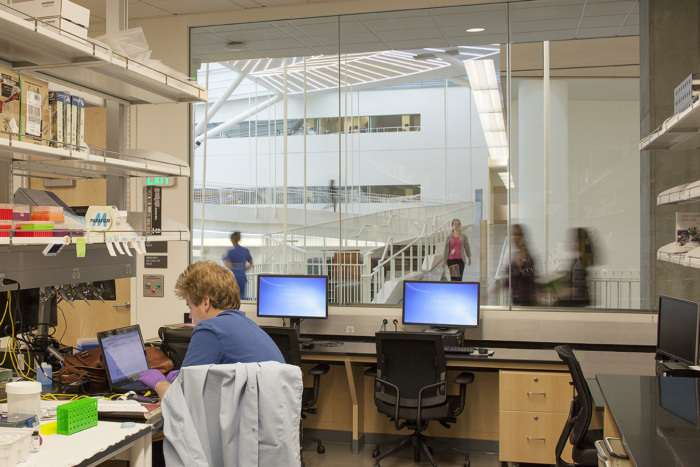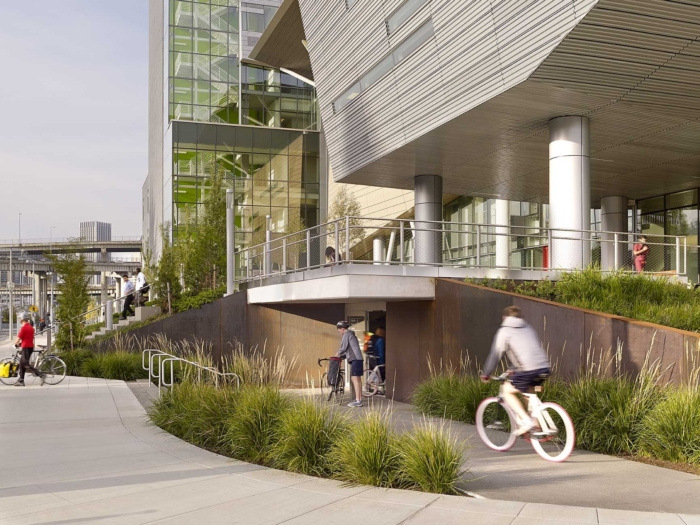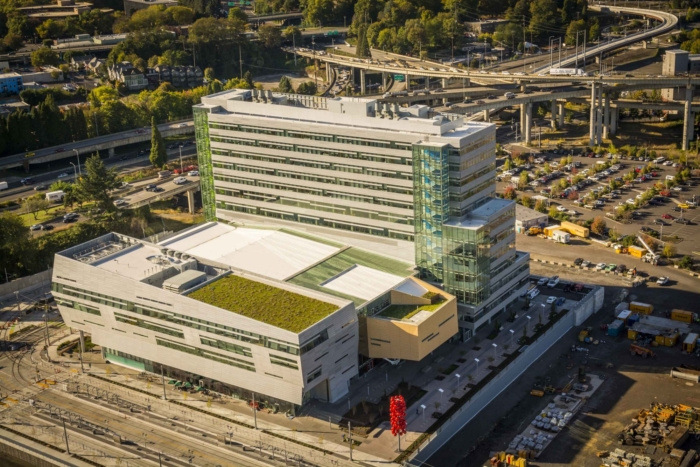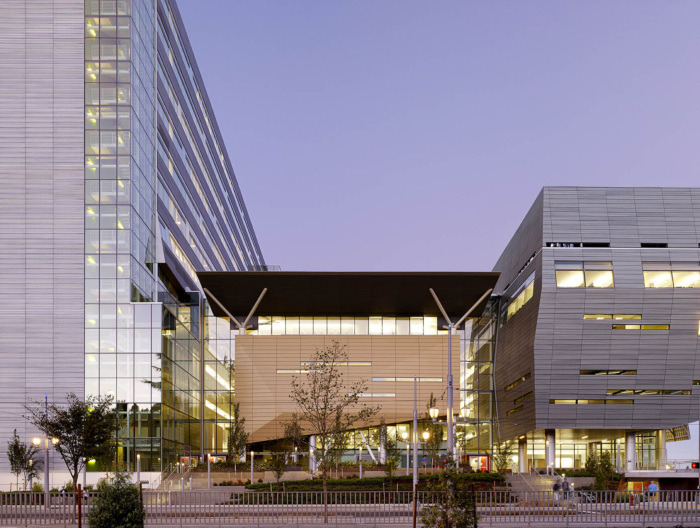Collaborative Life Sciences Building
CO Architects and SERA Architects were engaged by Oregon Health & Science University (OHSU), Portland State University (PSU), and Oregon State University (OSU) to design their Collaborative Life Sciences Building located in Portland, Oregon.
As Design Architects and Interior Designers, CO Architects worked closely with Executive Architect SERA Architects to create the design for the Collaborative Life Sciences Building (CLSB), which embodies and helps achieve the goals of an interdisciplinary, multi-institutional campus. The building does so in the form of a 12-story complex with 500,000 square feet of space for classrooms, lecture halls, and laboratories for research and teaching, including medical simulation laboratories for high-tech, team-based learning. The building is conceived as an innovative model of interdisciplinary health sciences education and research, engaging students, faculty, and pedestrians through a concept of “health science on display.” The project has received LEED Platinum certification, and was named one of the 2015Top Ten Green buildings by the American Institute of Architects’Committee on the Environment.
CLSB, clad in steel and glass, comprises three great volumes; the five-story south wing, connecting glass atrium, and the 12-story Skourtes Tower. The tower contains teaching, medical research, and science labs, mechanical spaces, offices, and a dental school on top. The south wing houses a leading-edge medical simulation suite for teaching, as well as administrative offices and classrooms.
Visitors enter from four points of arrival, heading toward their destinations through the open, transparent atrium, which exemplifies the idea of “health science on display.” Although there is ample underground parking, most people will arrive by bicycle, on foot, or by public transit. Sightlines through, above, around, and below positions in and around the grand atrium provide clarity.
Suspended walkways are a commanding feature of the glass atrium and bring to mindPortland’s nearby bridges. They also work as an interior and urban translation of the typical grassy collegiate campus grounds, where students’ short cuts across formal quads carve diagonal paths. The walkways proclaim, with dramatic flair, the vision and practical nature of this innovative interdisciplinary, multi-institutional facility. Literally bridging gaps between disciplines, the walkways enable efficient circulation among areas, and allow for critical casual conversation and collaboration on landings equipped with seating areas.
Sunlight bathes atrium spaces through glass curtain walls and a glass roof that is supported by slender, high “tree” columns. Another striking feature, a jewel box-like structure, protrudes beyond the plane of the glass curtain wall. This dividable lecture hall is lifted above the ground floor by column and brace supports. Clad in wood-textured panels, the lecture box differentiates itself from the glass building, although it ties into parts of the atrium cladding. A400-seat lecture hall, a 200-seat lecture space, and a library can be seen through this volume looking into the atrium. The student lounge on the top of the box offers an indoor-outdoor space central to the daily life of the building.
Daylighting is a driving concept of the building’s overall design of the Skourtes Tower as well, with labs open to daylight on two sides. To enable this, support spaces are moved to the center of the floor plan and interlaced with the lab areas, exposing broad expanses of space to daylight. Office spaces are on the east side of the tower, adjacent to the labs, with a glazed, connecting staircase leading, at every-other floor, to communal spaces for conferences or lounges. All of those communal spaces enjoy views of the river and landscape. The building’s dental school, on the top four floors of the tower, includes a lobby and has panoramic views.
Increased focus on patient safety, team-based learning, and technology-integrated clinical care has placed emphasis on simulation as an essential part of a high-quality and rigorous medical education. CO Architects’ long-range experience in both health care and education contributes to the site-specific simulation center at CLSB. The fourth-floor center, equipped with state-of-the-art technology, is flexible, open and expansive, accommodating collaborative, clinical team training across disciplines and exemplifying the collaborative nature of the entire school.
CLSB’s interiors are program driven, using basic materials of polished concrete, drywall, and wood. Laboratory areas have maple benches and epoxy countertops, which, as with other finishes throughout the building, reflect light, underscoring the daylighting effect. Bright white abounds on interior walls, with a fresh color scheme of lime green, tropical blue, sunny yellow, and vivid red lining staircases. Furniture in lounges is comfortable and moveable to encourage conversations and collaborations among students and researchers.
The architect also worked with the client and other stakeholders to bring two colorful, bold pieces by Los Angeles-based artists to the building. A provocative piece by Pae White uses LED (light-emitting diode) tubes to cast light in a spectrum of colors across atrium soffits. Christian Moeller’s 40-foot-high outdoor sculpture reflects science and medicine with enormous red fiberglass spheres conjuring molecular structures.
Design Architect: CO Architects
Design Team: Scott Kelsey, Paul Zajfen, Jonathan Kanda, Arnold Swanborn, Fabian Kremkus
Architect-of-Record: SERA Architects
Executive Team: Don Eggleston, Alene Davis, George Hager, Steven Ehlbeck, Becky Epstein
Contractor: JE Dunn Construction
Photography: Jeremy Bittermann, Bruce Forster


